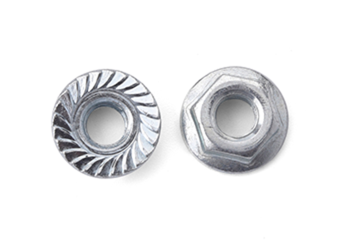Dec . 26, 2024 10:28 Back to list
m3 hex nut
Understanding M3 Hex Nuts A Comprehensive Guide
Hex nuts are essential components in various engineering, construction, and manufacturing applications, playing a crucial role in fastening systems. Among the diverse array of hex nuts available in the market, M3 hex nuts are notable for their versatility and utility. In this article, we will explore what M3 hex nuts are, their features, typical applications, and some best practices for usage.
What is an M3 Hex Nut?
An M3 hex nut is a type of hexagonal nut designed to fit a metric screw or bolt with a diameter of 3 millimeters. The 'M' in M3 indicates that it adheres to the metric system, which is used globally for precision engineering. The hexagonal shape allows for multiple points of contact when using a wrench, enabling a strong hold and easy adjustment.
The dimensions of an M3 hex nut typically follow the specifications laid out in the ISO (International Organization for Standardization) standards. For M3 nuts, the width across flats (the distance between two opposite sides of the hexagon) is usually around 5.5 mm. They are available in various grades, with different material compositions, such as stainless steel, carbon steel, and nylon, catering to different environments and load requirements.
Features of M3 Hex Nuts
1. Material Variety M3 hex nuts can be produced from various materials, including stainless steel, brass, plastic, and alloy steel. This diversity allows for their use in numerous applications, from sensitive electronics to heavy machinery.
2. Corrosion Resistance Stainless steel M3 hex nuts are particularly popular due to their excellent corrosion resistance, making them ideal for use in outdoor or humid environments.
3. Size and Threads As a metric component, M3 hex nuts follow the standard metric thread pitch of 0.5 mm. This standardized sizing ensures compatibility with M3 bolts and screws.
4. Load Capacity The load capacity of M3 hex nuts is defined by the grade of the nut, which determines its strength and durability. Higher-grade nuts are suitable for applications that require greater strength and resistance to shear and tensile loads.
Applications of M3 Hex Nuts
M3 hex nuts are widely used across various industries, including
m3 hex nut

- Electronics Small hex nuts are often used to secure components in electronic devices, offering reliable fastening in confined spaces.
- Automotive In automotive applications, M3 hex nuts serve crucial roles in holding together various mechanical assemblies, contributing to the vehicle's structural integrity.
- Construction These nuts are essential in building structures, machinery, and other hardware, ensuring that components are securely fastened.
- DIY Projects For hobbyists and DIY enthusiasts, M3 hex nuts are often found in various projects, from model building to home improvement tasks.
Best Practices for Using M3 Hex Nuts
When working with M3 hex nuts, adhering to best practices can enhance performance and durability
1. Proper Torque It is vital to apply the correct amount of torque when fastening an M3 hex nut. Over-tightening can lead to thread stripping, while under-tightening may result in a loose connection.
2. Compatibility Always ensure that the M3 hex nut is compatible with the bolt or screw being used. Using mismatched sizes can compromise the integrity of the assembly.
3. Corrosion Protection If the application involves exposure to moisture or chemicals, consider using coated or stainless steel hex nuts to prevent corrosion.
4. Regular Inspection For applications subject to vibration or changing loads, periodic inspections of the fasteners can help identify loosening or wear, allowing for timely maintenance.
Conclusion
M3 hex nuts are compact, versatile components that play a pivotal role in a multitude of applications, from electronics to construction. Understanding their features, applications, and best practices ensures that they are used effectively and safely. By selecting the right materials and adhering to proper usage guidelines, engineers and DIY enthusiasts alike can benefit from the reliability and strength that M3 hex nuts provide. Their importance in modern engineering cannot be overstated, making them an indispensable part of countless projects across various fields.


